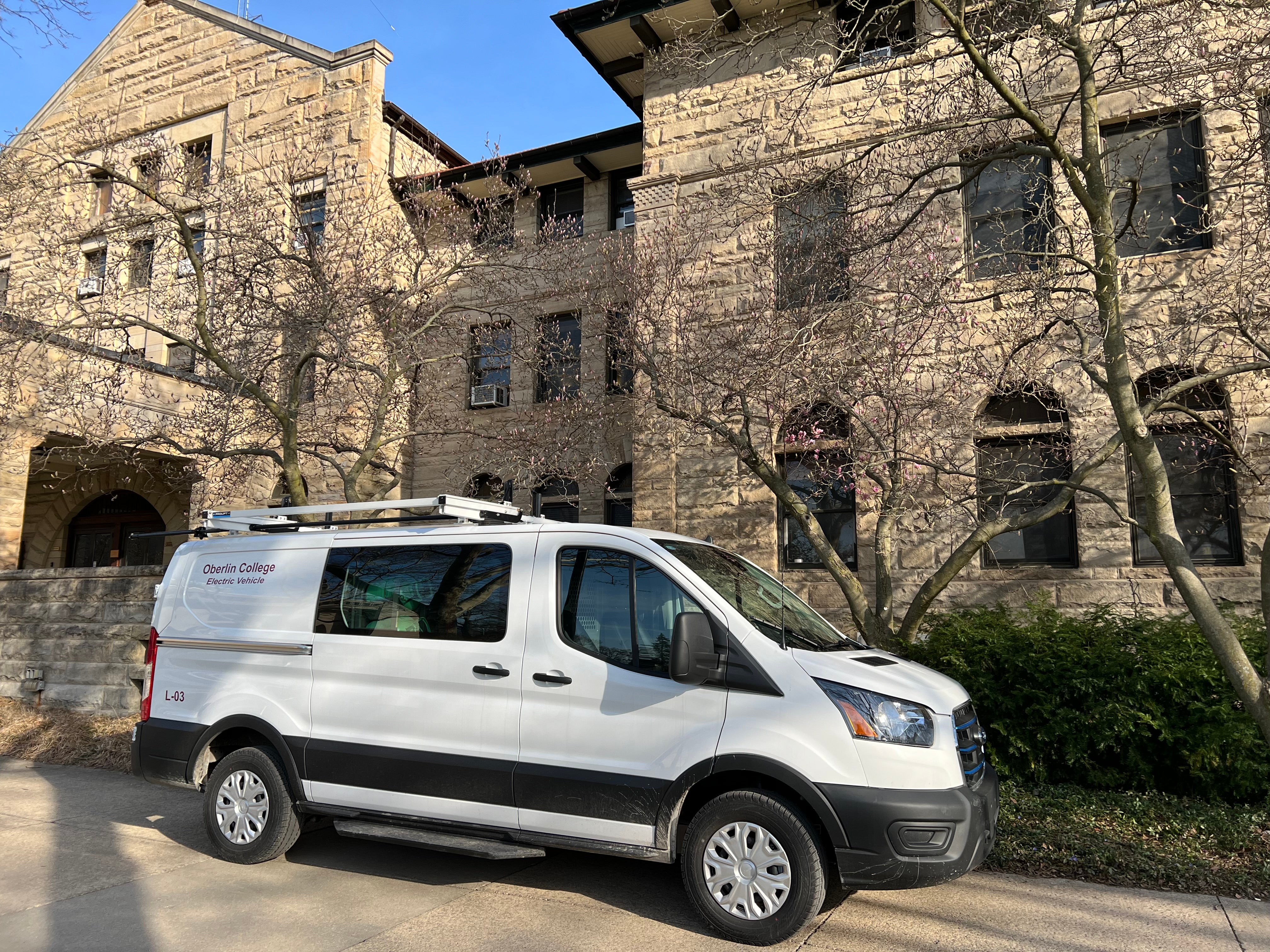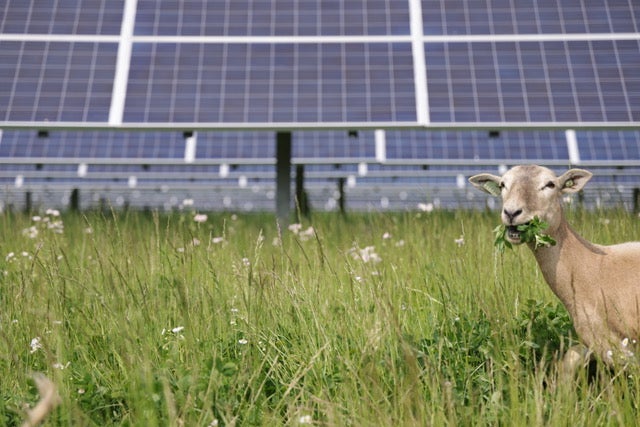Office of Energy and Sustainability
Campus Energy Programs
Oberlin College and Conservatory is committed to carbon neutrality by 2025. The Sustainable Infrastructure Program (SIP) shoulders much of the heavy lifting of this goal by decarbonizing 85% of the campus district energy system loads through the transition from a natural gas boiler system to an electric ground source heat pump system. In addition to the work of the SIP, the college has a robust portfolio of exciting energy management projects and initiatives.
Electrification of Vehicles and Buildings
Oberlin College and Conservatory is working to electrify campus vehicles and lawn care equipment. In March 2024, two new electric Ford E-Transit vans began to service campus. They were joined in April by four additional all electric GEM eL XD utility carts. In addition to vehicles, electric handheld equipment such as trimmers, weed-whackers, and chainsaws are being phased in. Other initiatives are found in athletics, where a Turf Tank robotic line painter was put in service last year. Learn more about the initiative.

Ecolympics
Ecolympics is Oberlin’s annual community resource reduction competition and event series that aims to minimize water and electricity usage through behavior change. The goal of the competition is to challenge participants from the college and the community to strive for environmental action at both the individual and local levels. The event series strives to educate members of the Oberlin community by initiating larger conversations about sustainability and resource consumption through events, activities, and more. Learn more about Ecolympics.

Dashboard and Energy Orbs
The campus resource monitoring system, known as the Environmental Dashboard, is a tool designed to give Oberlin students and the community feedback on their consumption of resources. The Orbs make basic electricity and water use information visible to residents by translating a building or floor’s current level of consumption into a spectrum of colors. The colors display how much a building is consuming at that moment relative to what it normally consumes at the same time of day. Learn more about the Environmental Dashboard.
Agrivoltaics Project
The Agrivoltaics Project, which began in Spring 2023, is an initiative to find less carbon intensive technology to maintain the vegetation near and around the campus’ largest solar array. By using sheep to “mow” the vegetation, the solar array is kept from being shaded by tall plants, while an area farmer is paid to manage the local landscape. Agrivoltaic programs are an example of how renewable energy can be leveraged for multiple services, in this case food and energy production. We hope to further diversify the land with native plants that support pollinator habitat and add other benefits to this multi-enterprise space. Learn more about the program.

Onsite Solar Energy Production
Oberlin College and Conservatory is home to four solar arrays, which in aggregate provide around 11% of annual electricity needs. Solar is the main source of on-site renewable energy, with the balance of clean energy coming from Oberlin Municipal Light and Power System (OMLPS), the local municipal power utility.
The largest solar array is the 2.27MW project near the north athletic fields. Built in 2012, the array produces around 2,400,000 kWh per year, and currently benefits from agrivoltaic land management to control vegetation and maximize production. Nearby on north campus is a 9.9kW solar array located on Robert Lewis Kahn Hall, a First Year Residential Experience residence hall that is focused on sustainable living.
On south campus are the 59 kW rooftop array and the 101 kW canopy array that support the Adam Joseph Lewis Center for Environmental Studies. This is the project that first demonstrated Oberlin College and Conservatory’s vision for sustainability and buildings that teach. Built in 2000, the building helped shape today’s green building movement, and was the nation’s first certified net zero commercial building.
Building Controls and Energy Monitoring
Oberlin College and Conservatory boasts an advanced Building Automation System (BAS) designed to oversee various subsystems, including lighting, HVAC, security, domestic hot water, municipal drinking water, electrical consumption and heating and cooling energy. The BAS provides the ability to analyze building reports and trends. This insightful data aids in the identification of issues such as water leaks or malfunctions in heating or cooling systems to enhance building performance, thereby optimizing energy efficiency. The integration of energy monitoring systems has paved the way for Ecolympics, the annual community and campus resource reduction competition.
Green Buildings
Oberlin College and Conservatory is home to a number of green buildings. Learn more about the various buildings and their unique features.